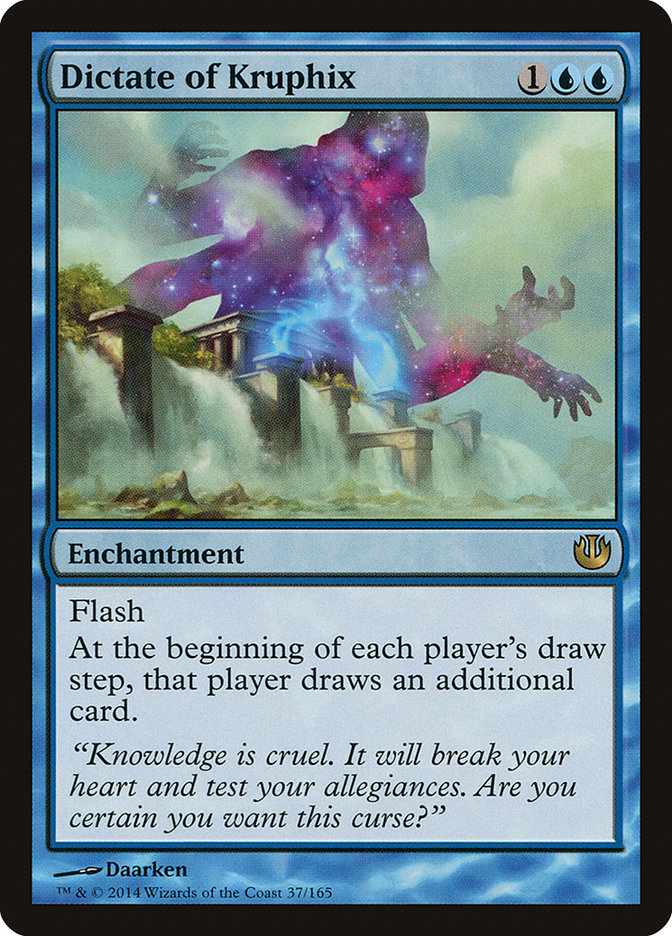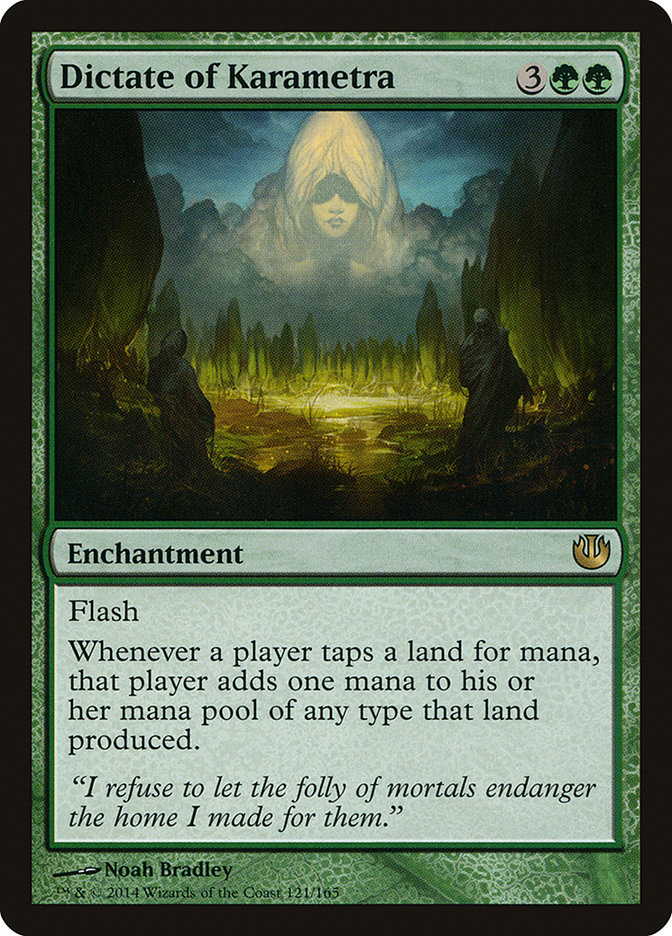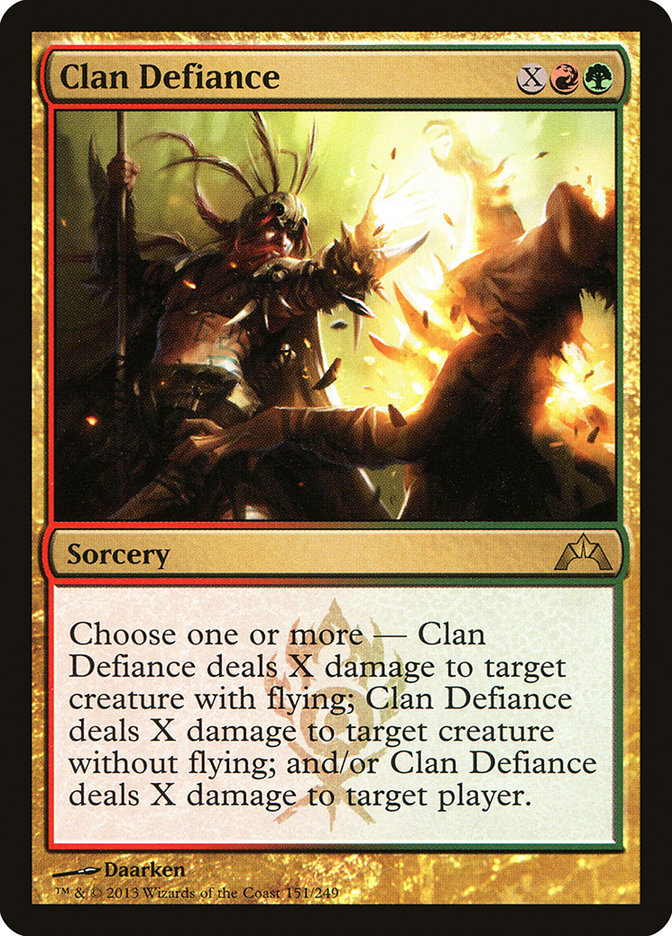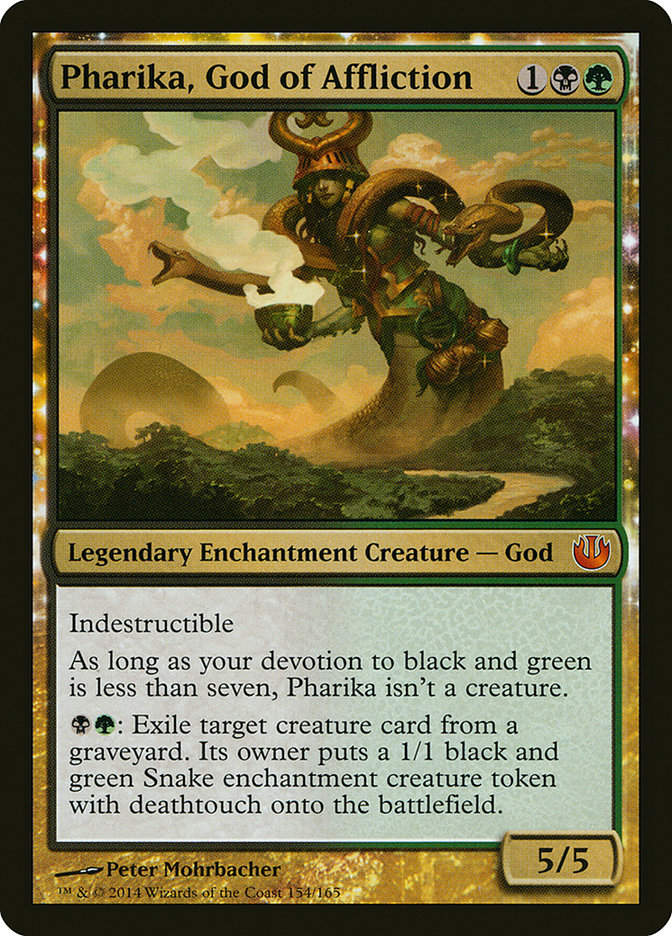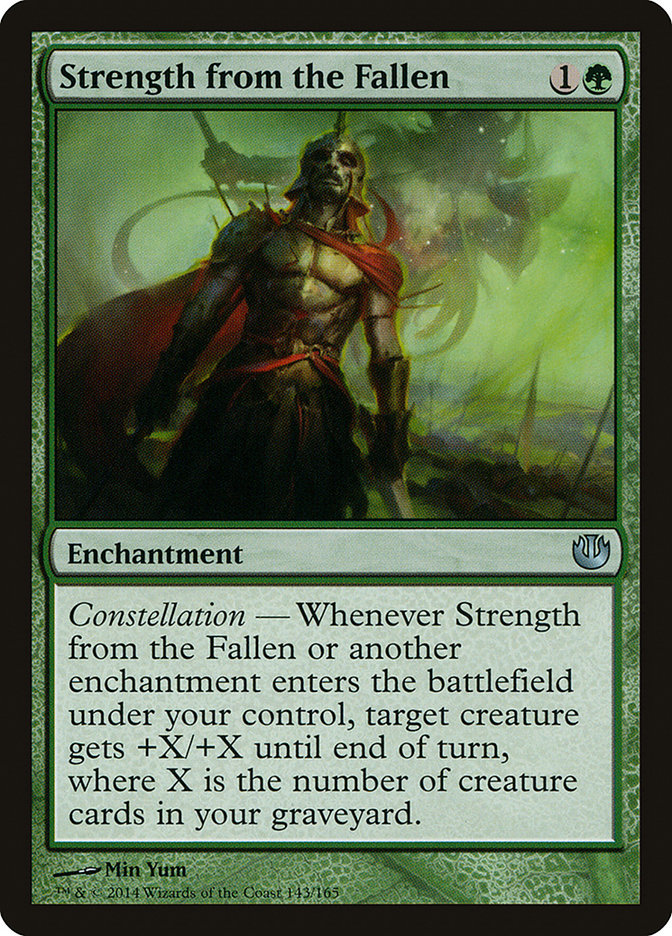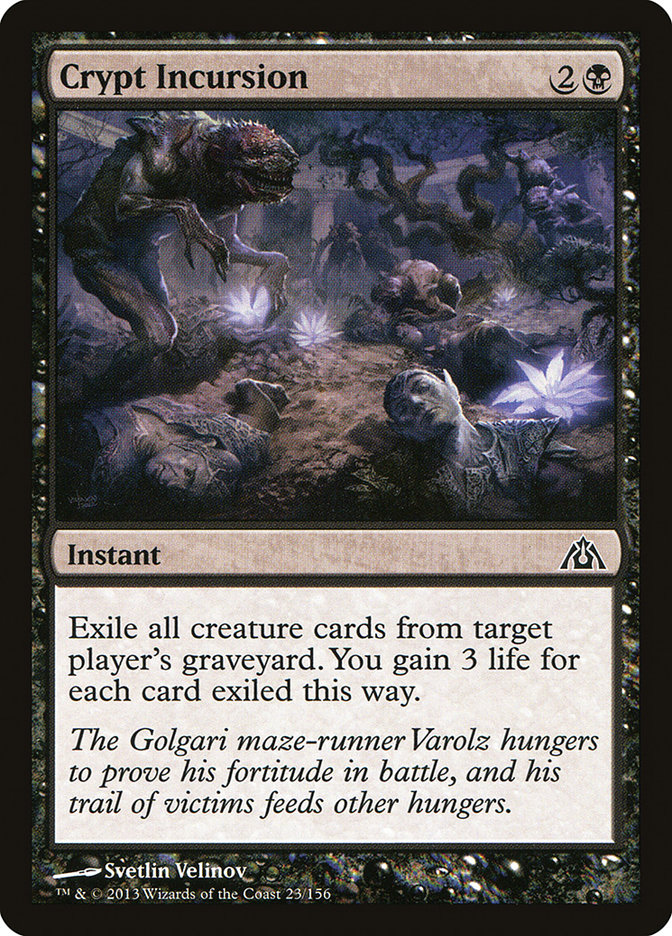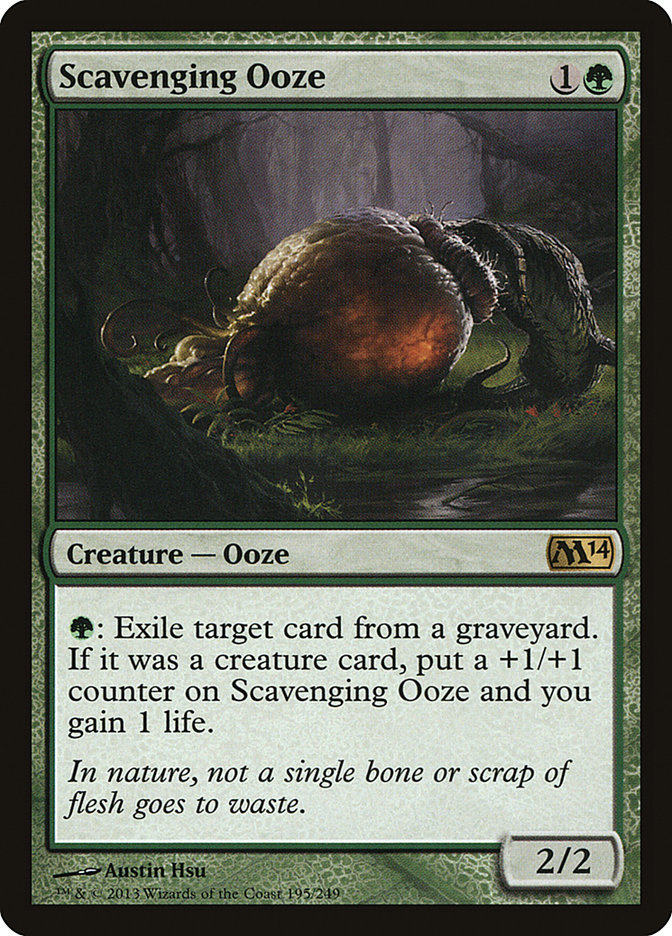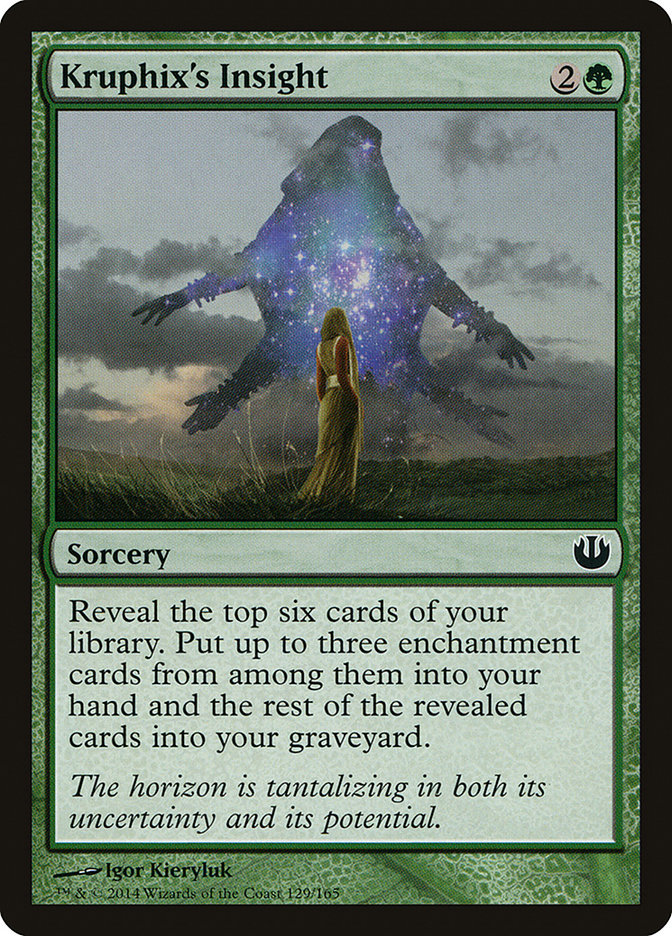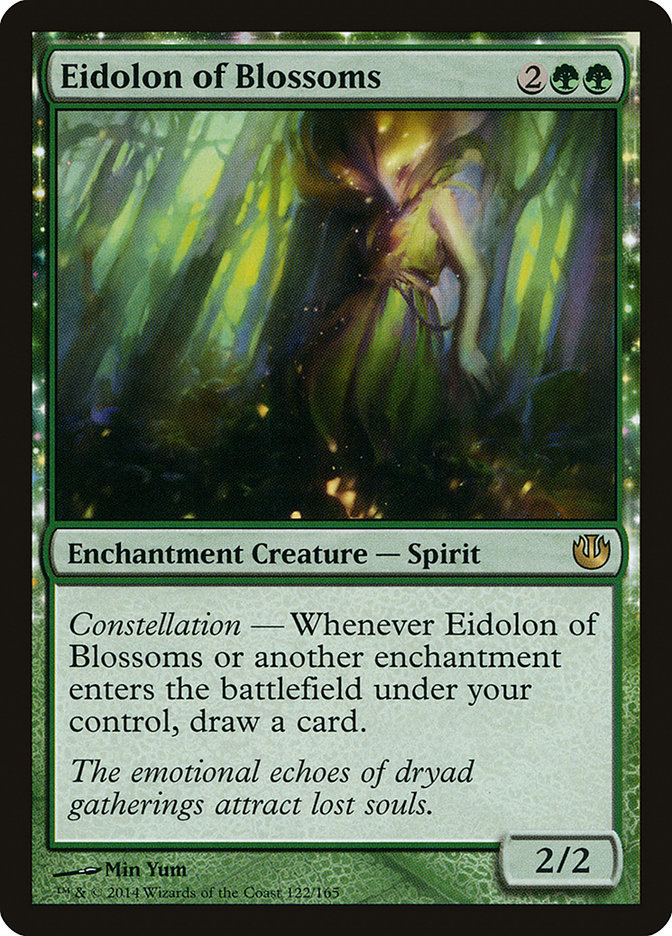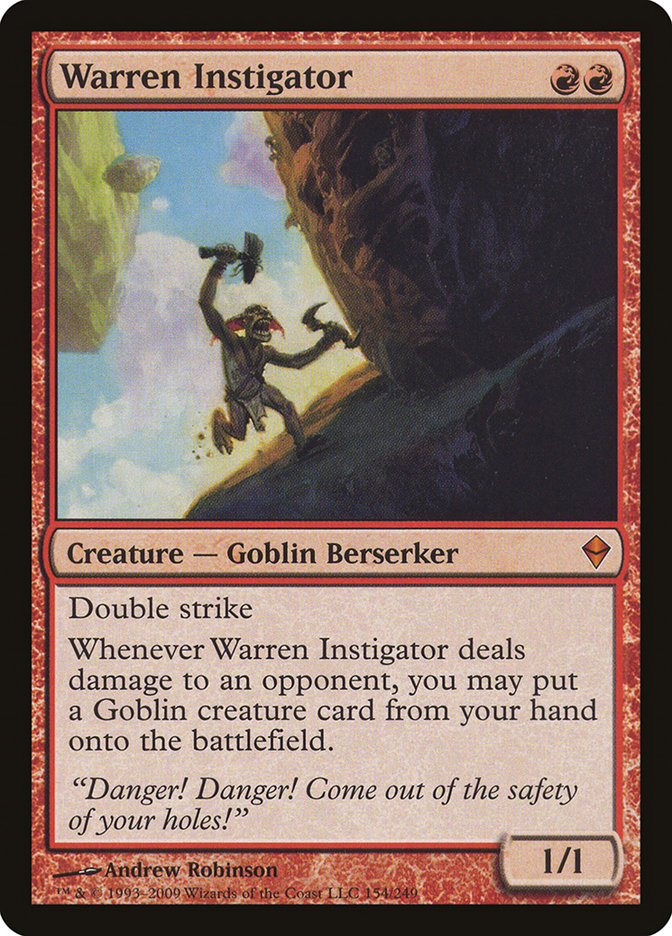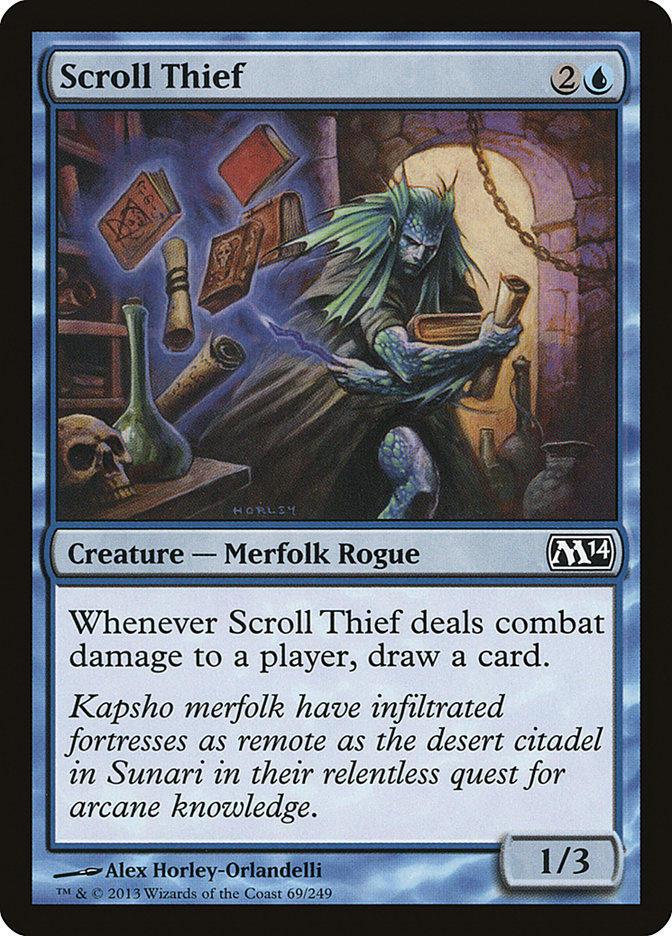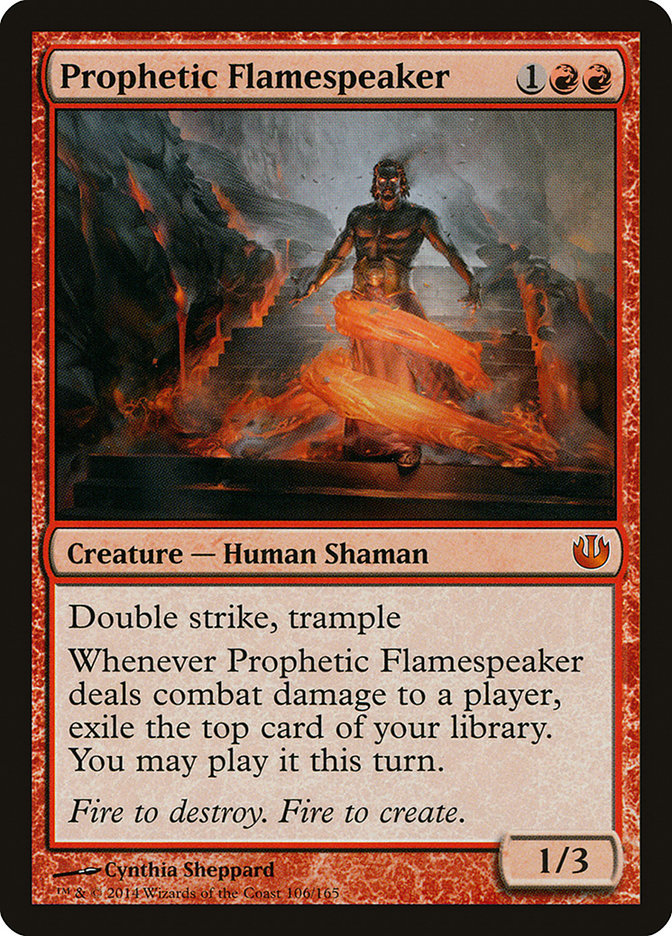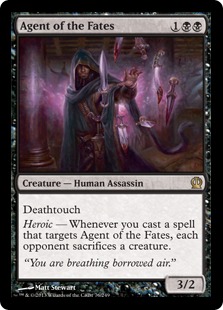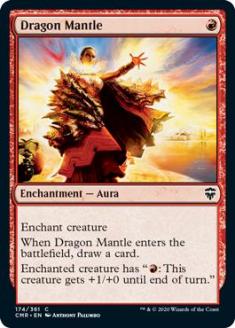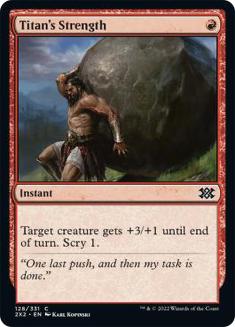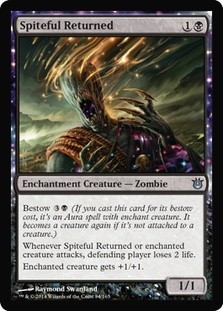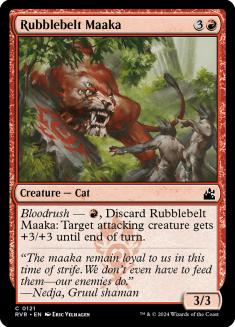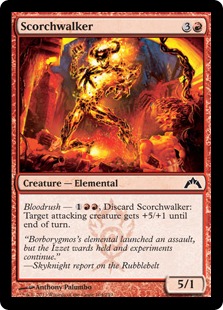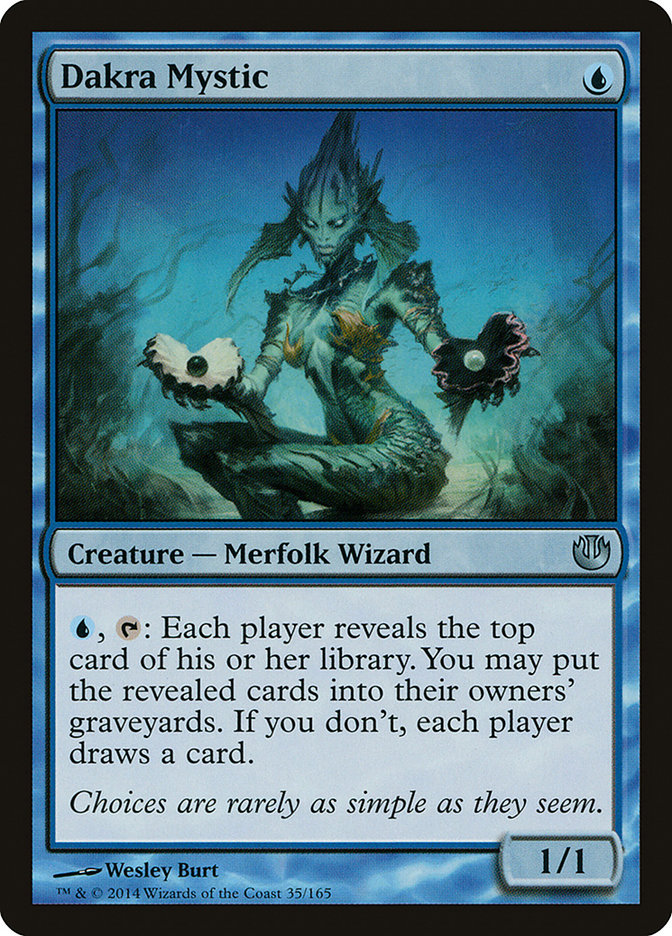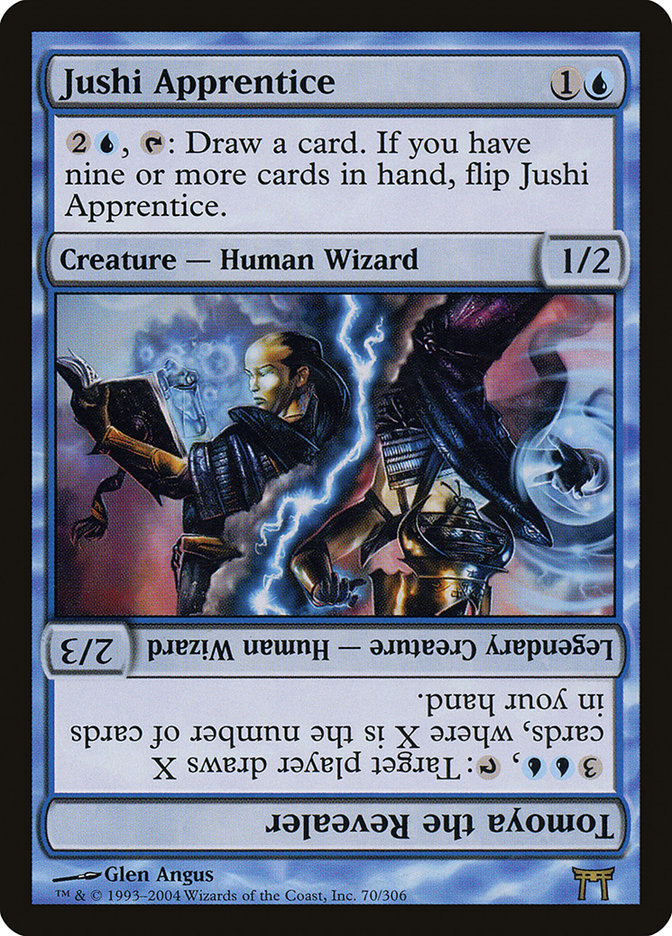Oh Kruphix, God of Horizons, how you puzzle us.
Last week we talked about the Gods of Theros, and Kruphix had completely stumped me—I had no idea what one would even do with the card in a competitive Standard deck. Tons of people posted decklists and ideas (awesome job guys!), but in pretty much every single one Kruphix just seemed like he was tacked on a big mana midrange/control deck and his effect was not needed.
The only idea that really interested me was courtesy of Ryan Nock.
Ryan wanted to use Kruphix in a creatureless RUG Control deck based around Dictate of Kruphix and Dictate of Karametra, a bunch of bounce and counterspells, and Clan Defiance as a kill card. I definitely dig this idea as a sort of hybrid big mana Turbo Fog deck. Here’s a brainstormed rough draft:
Creatures (2)
Lands (25)
Spells (33)

Of course, while this deck is probably just awful and would require some major testing to even approach something playable, it’s certainly an interesting idea that does make use of Kruphix in a reasonable way. With all of our lands tapping for double mana, we will have plenty to store until we need it for a big Cyclonic Rift or a game-ending Clan Defiance. With Dictate of Kruphix and our card draw, we will also likely have more than seven cards in our hand, which will allow us in a small way to break the symmetry of both players drawing. We can continuously bounce most or all of our opponent’s permanents and put them in the spot of constantly having to discard.
We also have the nice bonus of completely ignoring the many spot removal spells in Standard, including Hero’s Downfall. While it is certainly possible this deck wants Jace, Architect of Thought or Sylvan Caryatid, this is a nice perk.
However, while the idea is certainly intriguing, it’s very possible that the deck could be better off without even playing Kruphix at all.
A few people pointed out that I ignored an important factor of Pharika, God of Affliction’s ability—that the creature tokens it creates are enchantment creatures and that this can help trigger constellation. While constellation seems like more of a Limited mechanic, there is one card that is both very powerful and excellent in concert with Pharika that might just push her into the realm of playability.
Strength from the Fallen seems like it slots perfectly into the G/B Dredge deck that has been making the rounds lately.
Creatures (31)
- 2 Jarad, Golgari Lich Lord
- 3 Lotleth Troll
- 2 Deathrite Shaman
- 4 Elvish Mystic
- 2 Shadowborn Demon
- 3 Sylvan Caryatid
- 4 Nighthowler
- 4 Nemesis of Mortals
- 3 Herald of Torment
- 4 Satyr Wayfinder
Lands (20)
Spells (10)

While the deck would certainly have to shift a bit to accommodate Strength, many of the creatures in it are already enchantments, and giving Lotleth Troll an extra +8/+8 (perhaps even at instant speed with Pharika) every turn is a pretty big game. It is also very nice that Commune with the Gods can search for enchantments, as it being able to find either Whip of Erebos or Strength gives the deck a very nice layer of consistency. Mana Confluence further shores up the early mana and factors into the consistency level.
The only real issue is that if people want to you beat you, there really isn’t that much you can do about it:
Still, the deck is powerful, explosive, and fun and is definitely getting a lot of new toys.
One card that seems like it might be sweet for this deck is Kruphix’s Insight.
However, I don’t think that it’s going to be better than any of the current trifecta of Commune with the Gods, Grisly Salvage, and Satyr Wayfinder. Having your enabler cost three cuts too hard into the spot where you need to be casting business spells, and the deck doesn’t seem like it will have enough enchantments to fully support it to the max.
But while Kruphix’s Insight might not be a great fit for the Dredge deck, I think it is still a pretty powerful card for what it does. If your deck is built correctly, it is a shade better than a three-mana Harmonize, which is absolutely amazing. It does have the significant deckbuilding restriction of requiring about half of your deck to be enchantments, but Journey into Nyx offers us plenty of help in that area.
Creatures (10)
Lands (24)
Spells (26)

This is another really rough theorycrafted decklist, but it looks to leverage some powerful enchantment-based control elements with two new potent draw engines.
Eidolon of Blossoms is the latest in a long line of Enchantresses, and while it’s a bit more costly than its predecessors, it does have two nice advantages. Being an enchantment itself is nice since it plays even better with the synergies of the deck, but most importantly it triggers on itself coming into play. This means you will always get at least a card out of it—even if your opponent is able to kill it, you will always gain value on the exchange.
Much like the graveyard deck, the format definitely has the tools to keep a deck like this in check, and only time will tell how viable something like this will be.
Up next is a card I’m very high on.
Looking like the strange offspring of Warren Instigator and Scroll Thief (definitely a conception we don’t need to visualize), Prophetic Flamespeaker does a lot of things.
Even without its triggered ability, in a Standard format loaded with all sorts of creature pump effects, a 1/3 trampling double striker is a very reasonable body. There have been a few decks that have tried to use Ghor-Clan Rampager in conjunction with the doubling effect of Boros Charm or Flesh // Blood to go for a combo kill, and Prophetic Flamespeaker is two-thirds of that combo all by itself.
However, it’s not the body that we’re excited about.
Like Warren Instigator, Prophetic Flamespeaker uses the natural self-synergy of double strike and a combat damage triggered ability to provide us with a powerful effect. As Chandra, Pyromaster has shown us, the "reveal and cast this turn" mechanic is good but not nearly as good as just drawing a card. Sometimes you have other things to do with your mana, like casting an important spell or casting a spell in order to get your Flamespeaker through blockers. So how good is two triggers?
Warren Instigator showed us that too much of a good thing can be just that, as most of the time its ability was either just wasted excess or unnecessary overkill. A single hit from the vastly more efficient Goblin Lackey was much easier to accomplish and almost as devastating.
Of course "drawing" two cards is much different than getting to put two cards in for free, and a single hit from Prophetic Flamespeaker can really get you back in the game.
The big question is "where do we put this guy?" Does it slot into Mono-Red Devotion next to Boros Reckoner as an extra threat to provide gas for your Nykthos, Shrine to Nyx? Is it a curve-topper for Mono-Red Aggro decks? A threat for a Ghor-Clan Rampager based R/G deck? Maybe even a pseudo Ophidian for a midrange or control deck? There really is a ton of options, and I think this is going to be a format-defining card.
Let’s mix it up with the bevy of good bestow creatures that black and red offer.
Creatures (28)
- 4 Rakdos Cackler
- 4 Spike Jester
- 4 Tormented Hero
- 4 Herald of Torment
- 4 Gnarled Scarhide
- 4 Mogis's Warhound
- 4 Prophetic Flamespeaker
Lands (24)
Spells (8)

It is very possible that the deck could be built with any number of these cards:
I still think Agent of the Fates is a very powerful and underutilized card that will see its day in the sun, and many of the enablers for it and Prophetic Flamespeaker are also very reasonable cards. There are a lot of interesting ways to build this deck, and we must see how the format shapes up before we can really decide what we want to do with it.
The last card of the day is not nearly as flashy as many of the other ones we have looked at, but it is definitely a card that interests me. While we have seen many types of symmetrical card draw effects before, they have never been this efficient. Not only does Dakra Mystic provide symmetrical card draw, but it also gives you some control over the draw, which is a very nice bonus.
When you compare a card like Dakra Mystic to a former tournament staple like Jushi Apprentice, you can really see how apparent the reduced cost is. I can definitely see Dakra Mystic being a powerful sideboard card in control mirrors to be used in a similar manner as Jushi Apprentice or Azure Mage. It can come down very early in the game and then provide consistent card advantage by drawing cards at the end of your opponent’s turn. Very often in control mirrors both players are full handed, and your opponent will have to discard immediately afterward.
Is Dakra Mystic a powerhouse? No. But it is definitely a card that provides a unique and skill-testing effect at a very low cost, and that has me interested.
One of the hardest things to do when evaluating new cards is to figure out what place they have in the new format. Sometimes good cards get totally overlooked because they are never able to find their niche in a format, and sometimes cards that are merely okay end up being format staples because the conditions are just right.
Are these cards difference makers or busts?
And if they are going to make a difference, where will they do it?

